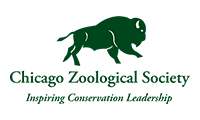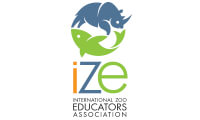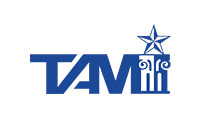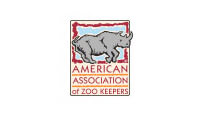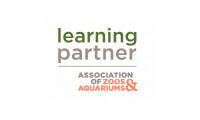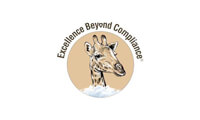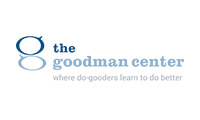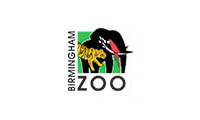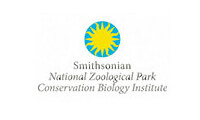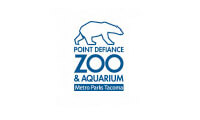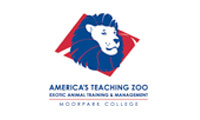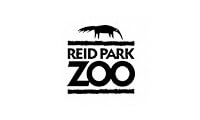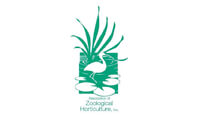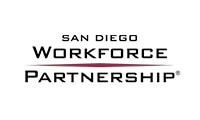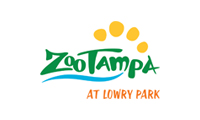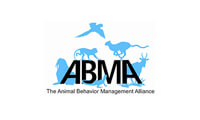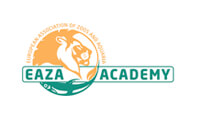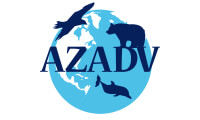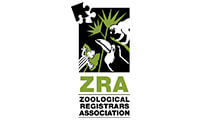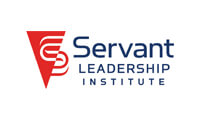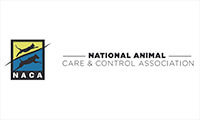Getting Better All the Time
Making Real Progress for Animals Changes Everything, Beginning with Attention to Little Things
By James F. Gesualdi
To keep ahead, each one of us, no matter what our task, must search for new and better methods—for even that which we now do well must be done better tomorrow.
—James F. Bell
Progress lies not in enhancing what is, but in advancing toward what will be.
—Khalil Gibran
Progress is accomplished by the [person] who does things.
—Theodore Roosevelt
Making Progress Today Is the Foundation for All We Can Accomplish
Actions started now may end with the day, but they continue day after day, and impact every tomorrow. Progress—directed toward our individual and collective visions for the genuine interests, protection, and well-being of the animals we serve—makes things better and changes them altogether. The transformation that we seek and lovingly labor toward for the animals is often incremental, though even that produces breakthroughs when sustained and improved upon over time. A little something new. A little something different. A little something extra. A little something less. A little something better.
Sharing insights, information, and ideas—as in this column—is a truly joyful endeavor. Like the untold hours invested in toiling (or is it playing?) in the garden each year, digging, seeding, planting, and removing weeds always produces beautiful blooms, beneficial growth, and other positive results such as character, discipline, exercise, and improved mental health. For our purposes, the beneficiaries are the animals we are honored to care for.
Progress is an external or outside thing, and it is furthered by our own internal and inside progress and growth (as well as what we do within our teams, groups, and organizations).
Working to change things outside of ourselves, like the lives of the animals we champion through our advocacy and care, is good and when done right, advances things for animals, individually and in groups, populations, and/or species. That external focus is admirable and necessary to make progress.
Amazingly, we can grow in our own ability and progress-making power when we also selflessly work on ourselves. Internally the work never ends, which is helpful to understand because the work outside of ourselves and on behalf of animals is limitless.
Making Progress with the Animal Welfare Act
The Animal Welfare Act (AWA) represented a sea change when it was adopted in 1966. Since then, its basic standards, administration, and enforcement are often criticized and underappreciated. Perhaps much of the seeming frustration stems from the sense, ironically shared by critics and regulated communities, that the AWA is it, the end point, and all that is required. Sure, there are accreditation/certification processes and standards that can do more for some animals. Even regulation together with accreditation/certification, as laudable as they might be at their best, can still be better, especially at making real progress.
Extraordinary progress-making power arises from a change in perspective—from seeing the AWA as the end point to realizing that the AWA is the starting point in providing appropriate animal care. As noted for many years, the AWA regulations containing performance- or outcome-based standards are a good vehicle for changes toward what we seek for animals as there is room for flexibility, innovation, and tremendous improvement.
This reframed mindset can be put into action right now by using and leveraging some recent expanded and refined U.S. Department of Agriculture (USDA) Animal and Plant Health Inspection Service (APHIS) Animal Care AWA guidance and other developments.
Updated and Streamlined Agency Website
Animal Care’s website has undergone a comprehensive update. Though much of the content is familiar, the Animal Care home page, found here, will lead to various priorities, including Ensuring the Humane Treatment of Animals and Center for Animal Welfare and Protecting Animals in Emergencies (with apologies to the equine world, Horse Protection Act resources are not detailed in this column). Also highlighted are trending topics such as Animal Welfare Resources, Attending Veterinarians, and Bird Regulations. Under Priorities, Humane Treatment leads to Animal Welfare Services and Activities. A helpful section marked “I Want To . . .” begins with File an Animal Welfare Complaint, which appears above Preparing for an Inspection, Attending Veterinarian Responsibilities, and Guidance Documents.
Note: The ability to file animal welfare complaints (including expressions of concern) with the agency is certainly beneficial, along with the ease of finding this information, but the current placement is somewhat regrettable, as it emphasizes complaints before highlighting the foundational requirements, guidance, and suggestions for AWA compliance and affirmatively promoting animal welfare. Admittedly, this reflection comes from one who has long suggested concerns and complaints provide invaluable opportunities for becoming more aware of perceptions, realities, and opportunities for change and improvement.
Following the link to Guidance Documents, including Animal Care Aids, Tech Notes, and other publications, Forms and Regulations reveals a most useful addition: the date each document was last updated. This is a great time saver, in that it is no longer necessary to open documents one has reviewed multiple times over the years (and has on file) to check for updates, though one can still do so to verify the currency. It also makes it very easy to identify the newest documents.
Note: Organizational plans, policies, protocols, and practices do not always contain an originating date, revision date, or expiration date. Most do not contain specific time frames for review and updates, though organizations should regularly undertake systematic re-reviews. What is examined gets thought about, discussed, changed, possibly eliminated, and always improved. Plus, policies, protocols, and practices need not require a negative incident or external directive to be an even more vital part of ongoing, continuous improvement with regard to things that can protect and possibly save some animal and human (for example, staff and visitor) lives. Such a practice has great potential, even undertaken incrementally over time—a reality, given the considerable daily demands of good animal care that puts the animals first. Considering the three-year length of licenses, it would be prudent to engage in reviews once mid-license, and again before applying for a new license.
Center for Animal Welfare Bat Welfare Symposium
This two-day program organized by the Center included presentations from a variety of agency and outside experts and stakeholders on bat welfare that included wild bats. Program materials can be found here.
Some of the presentations used the AWA as a starting point, understanding bats’ unique capabilities, characteristics, needs, and sensitivities, as well as the relevant regulations in Subpart F (the catchall for other warm-blooded animals), and went from there to provide exciting, different visions of bat interests, protection, and well-being. This program elevated my appreciation for bats and the challenges of being good bat stewards.
Note: Anyone and everyone at an AWA-regulated facility/organization who is directly involved in AWA inspections would benefit greatly by viewing the presentation “USDA Bat Inspections” by Drs. Laurie Gage and Sara Tobias. Dr. Gage began with an overview of AWA inspections and Dr. Tobias then walked through every element of the regulations reviewed during the inspection, including images and suggestions.
The framework for the standards governing all covered groups and species is the same, though individualized standards vary. Additionally, large numbers of animals cared for by zoos are covered (though looked at differently) under the same generalized regulations as bats. This presentation should be used to train staff about inspections, particularly those being added to your inspection team.
Birds: Maintaining Lofty Aspirations with Important New Guidance on Avian Environment Enhancement Plans
An important and long-awaited piece of additional guidance on the new bird regulations has arrived in the form of a two-page Tech Note, “Preparing Your Avian Environment Enrichment Plan: It’s More Than Adding Toys!,” found here. While it is unfortunate that the clearance process delayed issuance of this until after these beneficial plans were required, it’s good that this document is now available. The Tech Note begins with some general background, notes that the attending vet must approve the plan, touches upon exemptions and “What Your Plan Must Cover” (social needs, environmental enrichment, special needs, and other items). The second page of the Tech Note contains two elements that make it one of the agency’s best guidance documents. First is the “Environment Enrichment Plan Writing Guide.” As you write your plan, follow the prompts in this guide to make sure you adequately address each topic. The Guide, which closely tracks the regulations, then goes through social needs, environmental enrichment, special needs, and restraint devices, pointing out items to list, identify, outline, describe, and explain.
Secondly, the Tech Note closes with this fantastic invitation under More Information: “To learn more about environmental enrichment plans or ask questions about writing one for your facility, contact USDA’s Animal Care staff at (970) 494-7478 or animalcare@usda.gov.”
At this point, your organization should already have an Avian Environment Enrichment Plan that has likely been noted if not fully reviewed by your inspector. Please have your avian team review your plan in conjunction with the Tech Note to see if there is anything to add or tweak. If so, during and at the close of your internal review, the attending veterinarian should be on board and approve any updates. Maintain a copy of the Tech Note on file with your plan, as it may be helpful in resolving questions or differences during an inspection.
Note: Here is where progress-making truly takes off. The bird regulations, including the Environment Enrichment Plan, reflect the latest and most advanced agency thinking. Although they would be of benefit beyond birds, environment enrichment plans are not required for most animals or species covered by the AWA (though they may be by other bodies). Challenge non-avian animal care teams to use the Tech Note to review, improve, or prepare environment enrichment plans for the animals under their care. In doing so, they or their plans may suggest further improvements for the avian care team, making the avian plan even better.
More Helpful Information on Bird Regs Regarding Secure Containment, Public Feeding in Walkthrough Aviaries, and Inspection Preparation
On the updated website under the bird regulations is a section on Inspection Procedures for Birds that includes Frequently Asked Questions. A few of these jumped out and are worth sharing, as they were not there or didn’t register in previous reviews. Below are the verbatim questions in bold and agency answers in italics.
For activities such as public feedings in walkthrough aviaries, will additional staff be needed during operating hours?
Yes, for exhibits offering public feedings and intended contact between the animals and public, a responsible, knowledgeable, and readily identifiable employee or attendant must be present at all times during these periods of contact. For public walkthrough aviaries with no intended contact or feeding, the facility must monitor the area as often as necessary to ensure public and animal safety.
Is secondary containment in aviaries required?
There is no regulation that requires a secondary containment or perimeter fence for birds. The regulations only require that facilities employ measures that contain all birds securely. These COULD/MAY include safety doors, entry/exit doors to the primary enclosure that are double-door, or other equivalent systems designed to prevent escape of the birds. This is a performance standard that requires a facility adequately contain all the birds. If a facility is experiencing escapes, they must modify/improve those security measures to prevent escapes.
Another helpful resource is the more recently posted transcript of the training video to prepare for bird inspections.
Animal Welfare Inspection Guide
This author’s cherished AWA resource, the Animal Welfare Inspection Guide, is so important that it is the one USDA document explicitly referred to in the recent USDA-U.S. Department of Justice (DOJ) Memorandum of Understanding on the AWA and AWA enforcement, found here. The agency’s most recent version contains a very nice addition, and thanks goes to the update angels responsible for this new feature. Page 1–6, Section 1.6, Inspection Guide Updates lists the specific updates to this edition. This makes combing the several hundred pages of the Inspection Guide for changes so much easier.
Key changes include:
Section 4.8 Courtesy Visits
Courtesy visits are useful in many ways that can help promote greater compliance and advances in animal welfare. They also have been criticized, perhaps in part as a purported “free pass” if something serious is identified. The changes to this section include the listing and defining of specific types of courtesy visits, pre-license, follow up on a compliance concern, change in circumstance/new activity, and with the attending veterinarian. (Interestingly, only follow-up and change visits use the term “Face-to-Face.”) A meaningful addition, relating to unlicensed/unregulated facilities where “Direct” animal welfare problems are identified and an agency supervisor must be contacted, now identifies options, including “contacting local law enforcement or state animal welfare organizations.”
The most significant change is the subsection on Licensed/Registered Facilities, which was streamlined and clarified to state, in part: “If a Direct noncompliance is identified during the courtesy visit, cite the direct non-compliance on a focused inspection report, follow all inspection procedures described in Chapter 2 for direct citations, and inform the facility that an unannounced inspection will be conducted to follow-up on the direct noncompliance.” This ensures that courtesy visits can continue and be helpful to the facility while also holding it to account if serious issues are identified.
Note: Make good use of courtesy visits (and “calls” or outreach to your inspector), especially if you have questions; are embarking upon new activities, developments, or species; and/or are an attending veterinarian. Be vigilant to prevent Direct noncompliances (and/or immediately resolve them). Do more than is required and ask more questions of your inspector in terms of their experiences and observations of good practices elsewhere.
Section 4.12 Drive-Through Zoo/Park Inspection (Handling 4.12.3 and Public Feeding 4.12.4)
With respect to drive-through zoo/park inspections, there were a few minor deletions. Noteworthy additions under Handling are the following: A new recommended “Caution sign,” that requires visitors to “Remove all objects from the exterior of vehicle (flags, etc.).” For public feeding there is a new “NOTE: Facility must have sufficient barrier, space, or attendant present during public feeding.” It then identified the following unacceptable practices:
- Use of any of the following personal vehicles/situations (Motorcycle; Vehicle with open or soft roof, or with doors off; Guests riding in back of open truck bed [personal vehicles])
- Physical contact/harassment of animals by public
- Feeding food or other items not provided by facility
- Animal is able to put its head or other body parts inside privately-owned vehicle
- Feeding from personal vehicle with no attendants present, or insufficient number to patrol, monitor, and intervene during such activities.
Note: If yours is a drive-through facility, review the entire drive-through section, especially these updates, and make any appropriate revisions in your practices and policies including written instructions, caution signs, and staff monitoring and intervention.
USDA APHIS Impact Report and USDA APHIS Investigative and Enforcement Services AWA Enforcement Data released
On July 9, 2024, APHIS released its Fiscal Year 2023 Impact Report, which included protecting vulnerable animals covered by the AWA, found here. Interestingly, page 19 listed these statistics: 92% of regulated entities were in substantial compliance and 71% had no noncompliances.
The agency’s enforcement branch, Investigative and Enforcement Services, issued its enforcement data including matters relating to the AWA on June 27, 2024, found here. Along with this insightful data (more to come…) there is a very helpful enforcement glossary that defines different enforcement-related terms and actions.
U.S. Department of Justice Report Includes AWA-Related Actions
It is significant that the DOJ’s Environment and Natural Resources Division (ENRD) FY 2023 Accomplishments Report contained a three-page section, “Enforcing the Nation’s Animal Welfare Laws.,” found here on page 35. This portion of the report begins, “ENRD is a critical part of the federal government’s effort to see that animals are treated properly and with compassion.” (Emphasis added.) The report then discusses the unit’s civil and criminal responsibilities relating to judicial enforcement of the AWA (in partnership with the USDA as noted in the recent USDA–DOJ Memorandum of Understanding in the June 2024 column (see link above). Several individual AWA cases are then described, including successes related to civil forfeiture of dogs seized from criminal dogfighting ventures along the with prosecution of organizers and promoters, and civil enforcement actions with emergency injunctive relief securing the removal of domestic and exotic animals from inadequate facilities and re-situating them in improved conditions.
Note: The DOJ’s language, “… that animals are treated properly and with compassion” (emphasis added) reinforces the point made throughout this and other columns, that the law is the starting point of our efforts on behalf of the animals.
The DOJ Announces Record Payment and Groundbreaking AWA Settlement
In June 2024, the DOJ (rather than USDA) announced a settlement with Envigo RMS LLC and Envigo Global Services Inc. for knowingly violating the Animal Welfare Act and Clean Water Act related to a dog breeding facility in Cumberland County, Virginia. As part of the settlement resolution, the parent company, Inotiv, will guarantee more than $35 million in payments, be subject to increased animal care standards and be subject to a compliance monitor.”
As announced by Assistant Attorney General Todd Kim,
"The plea agreement also includes provisions to hold Envigo and its affiliates—including Envigo’s parent company Inotiv—accountable and subject to increased animal care standards. All facilities that Envigo and Inotiv operate worldwide will exceed the minimum compliance requirements of the Animal Welfare Act. Envigo will no longer sell or breed dogs. It will improve its facilities and hire well-trained staff and veterinarians and hold continuing education requirements. All its facilities in the United States will adhere to a nationwide compliance plan. And an independent compliance monitor will review all facilities and be empowered to take whatever steps are needed to ensure Envigo is in full compliance with applicable laws, agreements and terms of probation.
In total, the plea agreement guarantees more than $35.5 million in commitments—including $22 million in fines, $7 million in facility improvements, and $3.5 million in mitigation, as well and the costs for funding the compliance monitor.
The deterrence message here is clear. The Justice Department will vigorously prosecute violations of the Animal Welfare Act and the Clean Water Act."
This is significant, as the settlement imposes new safeguards going forward—including development and application of higher standards than the AWA, staffing enhancements, continuing education, and a compliance monitor with authority to compel action. These comprehensive measures correspond with the Excellence Beyond Compliance® approach and the elements included in countless voluntarily developed improvement plans and independent review recommendations.
A Good, Concise Statement Regarding AWA Enforcement—and It Comes from the Bird Regulations FAQs
AWA enforcement continues to have its moment, one that should last (in many ways). Here is a really good statement regarding USDA enforcement. Note the wording in the second paragraph about taking corrective actions to come into compliance. Corrective actions are necessary in certain circumstances (for example, citation of a noncompliance), but they too are just a starting point for your improvement plans!
What are the consequences of getting a citation on an inspection report?
Generally, Animal Care (AC) ensures regulatory compliance with the Animal Welfare Act (AWA) primarily through the use of inspections. Our inspectors conduct unannounced visits to licensed or registered facilities where they review all areas of care and treatment covered under the law. In some circumstances where an individual and/or business is found to not be in compliance with the AWA, APHIS may take action in addition to inspections to promote compliance, including issuing a Letter of Information or an Official Warning Letter. A Letter of Information is an informal warning letter documenting that AWA noncompliance was found and advising an individual and/or business that more stringent action may be taken if they remain noncompliant. An Official Warning Letter is an official warning of an alleged violation of the AWA. It provides notice to an individual and/or business that the Agency may seek a civil or criminal penalty if noncompliance is found in the future.
APHIS’ Investigative and Enforcement Services (IES) personnel investigate alleged violations when licensees or registrants have not taken corrective measures to come into compliance with the AWA, individuals and/or businesses are conducting regulated activity without a license or without being registered with USDA, or the noncompliance presents (or presented) a direct risk to the health and well-being of the animals involved. IES investigations may lead to the issuance of a regulatory compliance or enforcement action. For more information on the investigative and enforcement process, as well as on what actions may be taken to enforce the AWA, please visit IES website.
There is now a dedicated webpage on Animal Welfare Act Enforcement that provides additional comprehensive information and should be consulted for better understanding of the process, including potential outcomes.
U.S Supreme Court’s 2023-2024 docket Impacts USDA and the AWA
Recent Supreme Court decisions relating to administrative law and regulatory matters, including SEC v. Jarkesy, No. 22-859, will impact the agency, the AWA and enforcement. See John Simpson’s illuminating blog post, “Supreme Court Guts USDA’s Power to Assess Civil Penalties Under the Animal Welfare Act.” The full ramifications of this and other recent administrative law decisions are still being sorted out and will evolve over time. There may also be opportunities for innovation and improvement.
I will be speaking on this and other topics as part of an upcoming ECHO Digital program sponsored by TESSERE (formerly GLMV Architecture) on September 10, 2024, at 2:00 PM ET, entitled “Advancing Animal Wellbeing: Lessons from Animal Welfare Act Administration and Enforcement Trends.” Check here for more information and the link to register.
Opportunity Knocks to Share Expertise on Transport Contingency Plans
To better help those involved in animal transportation develop contingency plans (see general contingency plan requirements in 9 CFR § 2.134), APHIS Animal Care is working to develop materials to support the needs of its stakeholders. To assist in this effort, APHIS has contracted with an independent research organization, Knology, to conduct a survey of randomly selected Animal Welfare Act licensees and registrants (other than research registrants, who were previously surveyed). If they are selected to participate, licensees and registrants will receive an email from Knology.org. Participation is voluntary, and the responses will remain anonymous. Please note that transport plans and preparation are vital to animal protection and well-being, though they are only expressly required in the current AWA regulations for marine mammals when transport is to exceed two hours (see 9 CFR § 3.116[a]).
The Joy of Making Progress
The greatest undertaking in making real progress for animals is helping animals. That is why we are here now, together, united in a good cause for our fellow beings. The coolest thing in bringing this about is that progress-making power begins with us (from within and outside of ourselves, within our organizations, and is best when combined synergistically), and the needs and opportunities to make real progress for animals never end.
True progress quietly and persistently moves along without notice.
—Saint Francis de Sales
Never discourage anyone who continually makes progress, no matter how slow.
—Plato
In honor of the memory of Anne Innis Dagg, pioneering field researcher and the first Western scientist to study giraffes in their native habitats. Her work laid the foundation for current efforts to conserve giraffe populations.
© 2024 James F. Gesualdi, P.C. The opinions expressed herein are solely those of the author. This is not, nor should it be construed as, legal advice.

